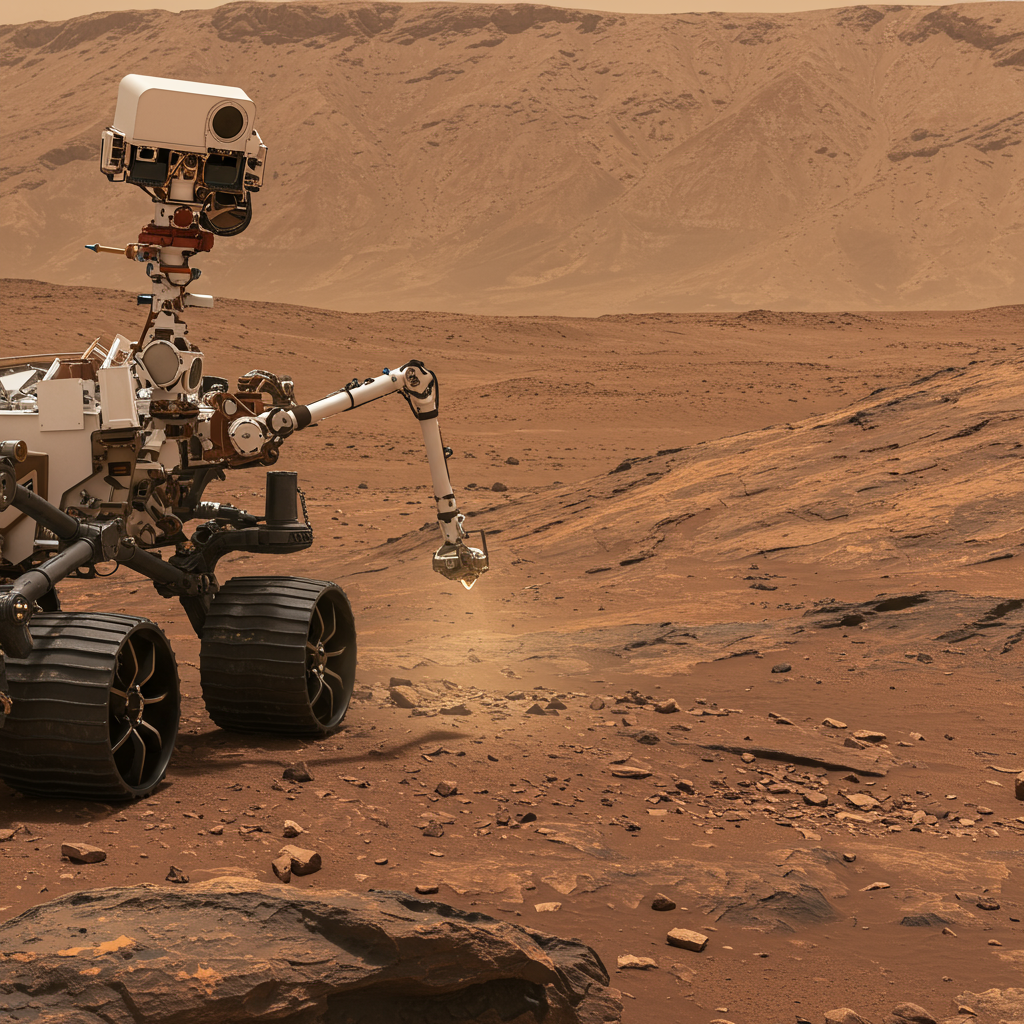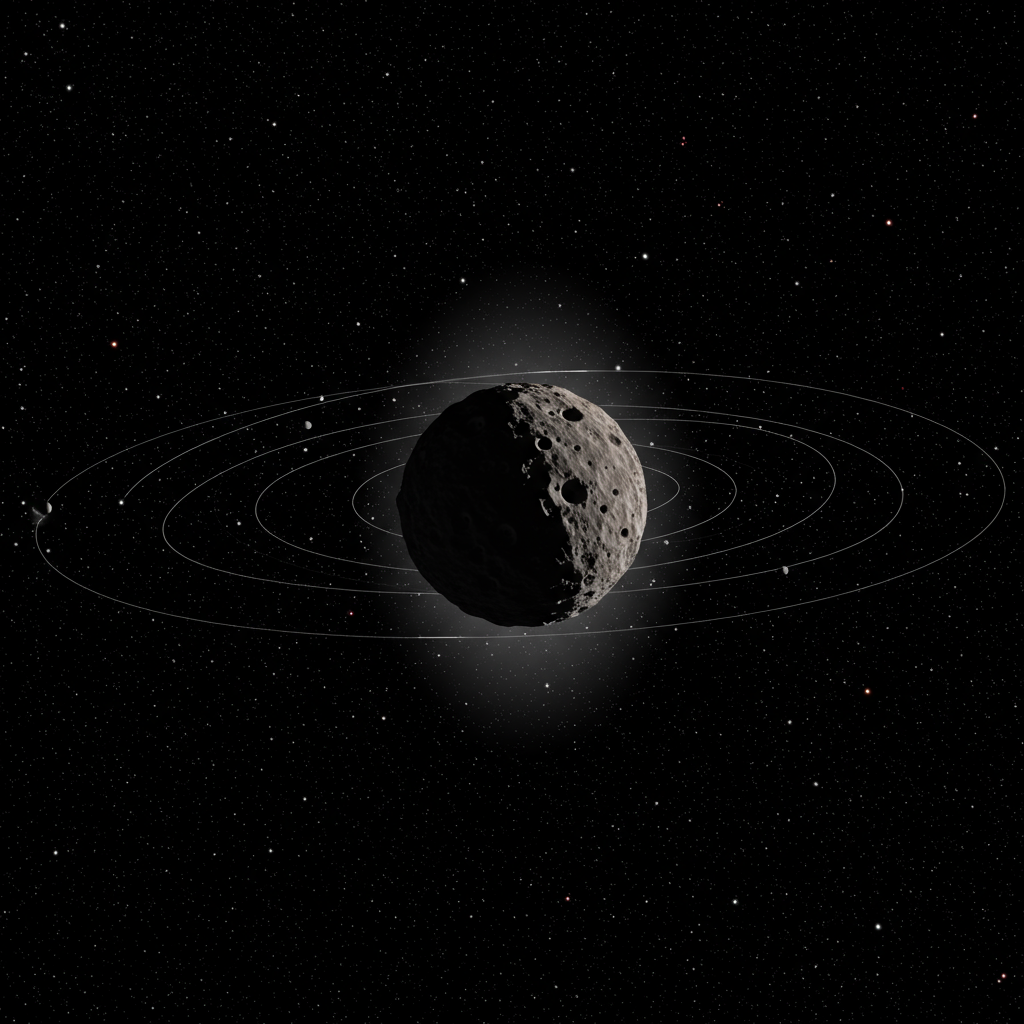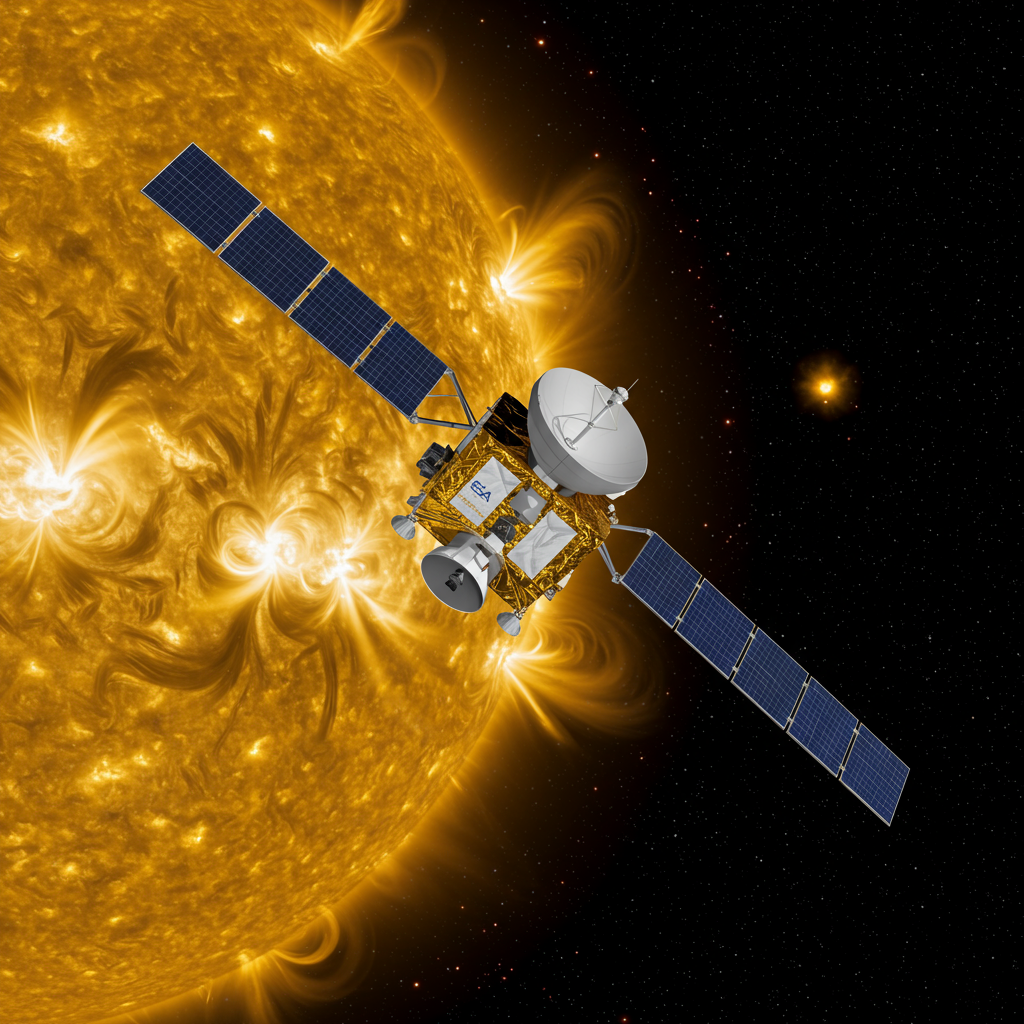NASA’s perseverance rover continues its groundbreaking mission on Mars, tirelessly working to unveil the secrets hidden within the Martian landscape. Operating within the ancient river delta and lakebed system of Jezero Crater, Perseverance acts as a robotic geologist, meticulously examining rocks and soil. Its primary goal is to search for signs of ancient microbial life, characterize the planet’s past climate and geology, and collect precious samples for future return to Earth. This involves a detailed, multi-step process focusing on studying the composition and history of Martian rocks, often requiring the rover to get up close and personal with the dusty surface.
The Martian surface, battered by billions of years of wind, dust, and radiation, doesn’t always tell the full story of the planet’s past. The key to understanding Mars’ geological and environmental history often lies just beneath the weathered outer layer of its rocks. Accessing this pristine, unaltered material is crucial for scientists to determine a rock’s mineral makeup, understand how it formed, and look for potential biosignatures – chemical or structural evidence of past life. Perseverance employs specialized tools and techniques to achieve this vital step, effectively giving scientists a window into Mars’ deep past.
Preparing Rocks for Analysis: The Abrasion Process
Before Perseverance’s advanced instruments can analyze a rock in detail or collect a sample core, the outer layer must be removed. This is where the rover’s unique abrasion system comes into play. While earlier rovers like Spirit and Opportunity used a Rock Abrasion Tool (RAT) with diamond dust tips and wire brushes, and Curiosity employed a Dust Removal Tool (DRT) with wire bristles, Perseverance utilizes a distinct approach.
Central to this process is a purpose-built abrading bit. This golden-colored tool, located at the end of the rover’s robotic arm, features a specific tooth pattern designed to effectively grind into the rock surface. By combining spinning and hammering motions, the bit chips away the outer weathered layer. This action creates a smooth, flat patch on the rock surface, typically about 2 inches (5 centimeters) in diameter. This prepared patch provides an ideal target for the rover’s scientific instruments to gather data accurately.
Clearing the Debris: The Gaseous Dust Removal Tool (gDRT)
Abrading the rock generates a significant amount of dusty debris, known as tailings. This material must be cleared away to allow instruments a clear view of the pristine surface. Perseverance tackles this with an innovative system called the Gaseous Dust Removal Tool, or gDRT.
Instead of brushes that could potentially transfer terrestrial contaminants to the Martian rock, the gDRT uses puffs of nitrogen gas. A burst of nitrogen, delivered at about 12 pounds per square inch (approximately 83 kilopascals), blows the dust and tailings away from the freshly abraded patch. The procedure typically involves five puffs per abrasion event – one to vent the system and four to clear the area. This method ensures that the analyzed surface is as clean and undisturbed as possible. As of June 2025, the gDRT had been used 169 times since the rover’s landing over four years prior, with a substantial reserve of roughly 800 puffs remaining, highlighting its efficiency and capacity for continued use.
Examining the Evidence: Instruments in Action
Once the rock surface is abraded and cleared, Perseverance deploys its sophisticated suite of scientific instruments for in-depth analysis. Each tool offers unique capabilities, working together to build a comprehensive picture of the rock’s composition, structure, and history.
Located on the end of the robotic arm alongside the gDRT is the WATSON (Wide Angle Topographic Sensor for Operations and eNgineering) imager. WATSON captures detailed, close-up photos of the abrasion patch and the surrounding area, providing crucial visual context for the scientific data. From high atop the rover’s mast, the SuperCam instrument performs multiple analyses. It fires thousands of individual laser pulses at the rock, vaporizing tiny amounts of material and analyzing the light spectrum of the resulting plume with a spectrometer to identify elemental composition. SuperCam also uses a different spectrometer to study the visible and infrared light reflected off the abraded surface, helping to identify minerals present. Further detailed analysis is conducted by the SHERLOC (Scanning Habitable Environments with Raman & Luminescence for Organics & Chemicals) and PIXL (Planetary Instrument for X-ray Lithochemistry) instruments, both also located on the arm. SHERLOC uses Raman and luminescence spectroscopy to search for organic molecules and specific chemicals, while PIXL employs X-ray fluorescence to determine elemental composition and mineralogy at a very fine scale.
Case Study: Analyzing the “Kenmore” Rock
A recent example of this detailed analysis process involved a rock nicknamed “Kenmore.” This rock marked the 30th instance where Perseverance performed an abrasion and subsequent in-situ analysis. However, Kenmore proved to be a challenging subject.
According to Ken Farley, Perseverance’s deputy project scientist from Caltech, Kenmore appeared visually suitable but behaved unexpectedly during abrasion. It vibrated significantly, causing small chunks to break off. Farley described it as a “weird, uncooperative rock.” Despite these difficulties, the team successfully managed to abrade just deep enough below the weathered surface to proceed with the scientific investigation. Analysis of Kenmore’s abrasion patch and tailings provided valuable insights. SuperCam observations of the tailings confirmed the presence of clay minerals, which are known to contain water bound as hydroxide molecules with iron and magnesium – characteristic of ancient Mars. SuperCam and PIXL analysis of the abrasion patch showed enhancements in iron and magnesium. Notably, the PIXL instrument also identified a manganese hydroxide mineral within the abrasion, marking the first time this specific type of material has been detected by the mission. Studying even difficult rocks like Kenmore yields data essential for understanding the diverse geology of Jezero Crater.
Exploring the Jezero Crater Rim: A Trove of History
Perseverance’s exploration recently brought it to the rim of Jezero Crater, a location proving to be a geological goldmine. Since arriving on the western rim around December 2024 and actively exploring the area known as “Witch Hazel Hill” (approximately 445 feet tall) since January 2025, the mission has entered its fastest science collection tempo yet. Scientists have been thrilled by the sheer diversity of rocks encountered here, far exceeding initial expectations.
The crater rim presents a complex mix of geological features. The rover finds fragmented rocks, likely ejected from deep underground by the ancient meteor impact that formed Jezero Crater, alongside well-preserved layered rocks formed billions of years ago on the surface. Some rocks show clear evidence of extensive interaction with water, while others appear relatively untouched by it. This rich variety provides an unprecedented opportunity to study different aspects of Martian history within a relatively small area. The rover has been busy, collecting five rock cores (three sealed) and conducting close-up analysis on seven rocks, in addition to 83 distance analyses with its laser. Specific samples highlight the diversity: “Silver Mountain” is an ancient (estimated 3.9+ billion years old), potentially impact-altered rock; attempts to sample a fragile igneous outcrop faced difficulties; “Tablelands” (sampled as “Green Gardens”) was found to be rich in serpentine, indicating extensive water interaction and potential hydrogen production relevant to astrobiology; and “Main River” is a uniquely banded rock.
Following the exploration of Witch Hazel Hill, Perseverance moved on to another significant region on the lower slope of the rim called “Krokodillen” (“the crocodile”). This area is particularly exciting as it’s expected to contain some of the absolute oldest rocks on Mars, potentially dating back to the planet’s earliest geological period, the Noachian, predating Jezero Crater itself. Early data from Krokodillen confirms the presence of clays, reinforcing the evidence for abundant liquid water in this region long ago. Orbital data also suggests the outer edges of Krokodillen may contain olivine and carbonate minerals. Carbonates are especially important because on Earth, they excel at preserving fossils and recording past climate conditions. The rover is currently analyzing a rock outcrop within Krokodillen known as “Copper Cove,” targeting these ancient rocks. If evidence of past life were found here, it could represent a much older epoch of Martian history compared to findings elsewhere in Jezero Crater.
Strategizing for Sample Return
The ultimate goal of Perseverance’s rock analysis and sample collection is to pave the way for the NASA/ESA Mars Sample Return program. Bringing these Martian rocks back to Earth will allow scientists to study them in detail with the most advanced laboratories, far exceeding the capabilities of instruments carried on a rover. Understanding the mineralogy and potential biosignatures within these samples is paramount.
Perseverance has been diligently collecting samples since its arrival. To date, it has collected 2 regolith (soil) samples, 3 witness tubes (collecting ambient dust), and 1 atmospheric sample. Crucially, it has collected 26 rock cores, sealing 25 of them for future retrieval. With seven empty sample tubes remaining, the mission team has adopted a new, flexible strategy. For some newly collected cores, like the “Bell Island” sample containing small spherules, the team is choosing to leave them unsealed within their storage bin for now. This allows the team the option to collect samples from later, potentially even more scientifically compelling discoveries and swap them out if necessary, maximizing the scientific return. This strategy, deemed safe by engineers due to strict cleanliness protocols and tube orientation, provides “maximum flexibility” as the rover continues its exploration and collection efforts.
Navigating the Red Planet: Record-Breaking Drives
In addition to its detailed scientific analysis, Perseverance is also an accomplished driver, efficiently navigating the Martian terrain. The rover recently demonstrated its increasing capability by setting a new record for distance traveled in a single autonomous drive.
On June 19, 2025, during the 1,540th Martian day (sol) of its mission, Perseverance drove an impressive 1,348 feet (411 meters). This surpassed its previous record, set on April 3, 2023, by about 210 feet (64 meters). While mission planners map out the general routes, Perseverance utilizes its sophisticated self-driving system, AutoNav, to find the safest and most efficient path between designated points of scientific interest. This autonomous capability significantly reduces the time spent traversing, allowing the rover to dedicate more time to critical scientific investigations and sample collection. As rover driver Camden Miller noted, the team is constantly learning how to optimize the rover’s performance, contributing valuable knowledge that will benefit future Mars missions.
Looking Ahead: Informing Future Exploration
The work Perseverance is doing today goes far beyond simply collecting data and samples. Every abrasion, every analysis, and every drive provides invaluable information that will shape the future of Mars exploration, including potential human missions.
Understanding the physical properties of different rock types – how they abrade, how stable they are for driving over, their composition – helps mission planners design future rovers and plan safer, more efficient traverse routes. The analysis of minerals like clays, carbonates, and those containing water (as hydroxides) is also critical for resource utilization. For instance, identifying rocks that contain hydrogen and oxygen that could potentially be extracted for fuel or life support is a key consideration for future human presence. Furthermore, characterizing different rock types helps determine which materials might be suitable for constructing habitats or other infrastructure on Mars. As Ken Farley emphasized, the data from rocks like Kenmore, even the “uncooperative” ones, directly informs future missions, giving them a much better understanding of the Martian surface environment they will encounter.
Frequently Asked Questions
How does Perseverance analyze Mars rocks below the surface?
Perseverance uses a multi-step process to study the interior of Martian rocks. First, a special abrading bit grinds away the weathered outer layer, creating a flat, roughly 2-inch patch of pristine rock. Then, the Gaseous Dust Removal Tool (gDRT) uses puffs of nitrogen gas to blow away the resulting dust and debris. Finally, a suite of instruments including the WATSON imager, SuperCam, SHERLOC, and PIXL analyze the exposed surface using cameras, lasers, spectrometers, and X-ray tools to determine its visual characteristics, elemental composition, and mineralogy.
What specific types of rocks is Perseverance finding on the Jezero Crater rim?
The Jezero Crater rim is revealing a wide variety of rock types. Scientists are finding fragmented rocks likely ejected by ancient impacts, alongside layered rocks formed on the surface. Some rocks show significant evidence of interaction with water, including those rich in clay minerals and serpentine (indicating water reacting with igneous rock). The rover is also targeting areas expected to contain very ancient Noachian-era rocks, potentially rich in olivine and carbonate minerals, which are important for understanding past climate and preserving potential biosignatures. Examples include the ancient “Silver Mountain,” serpentine-rich “Green Gardens,” and banded “Main River” samples.
Why is collecting samples from Mars rocks so important for future missions?
Collecting physical rock samples from Mars is a critical step towards answering fundamental questions about the planet, especially whether life ever existed there. The samples, carefully selected and sealed by Perseverance, are intended to be returned to Earth by future missions as part of the Mars Sample Return program. Once on Earth, these samples can be analyzed with far more sophisticated laboratory equipment than can be sent to Mars, allowing for unprecedented detailed study to look for signs of ancient life, understand the planet’s geological and climate evolution, and prepare for potential human exploration by assessing resources.
The ongoing work of NASA’s Perseverance rover represents a significant leap forward in our understanding of Mars. By meticulously analyzing rocks, collecting samples, and efficiently navigating the challenging terrain of Jezero Crater, the mission is not only uncovering the planet’s ancient history but also laying the groundwork for future human and robotic exploration of the Red Planet. Every piece of data gathered brings us closer to answering profound questions about Mars and our place in the cosmos.




